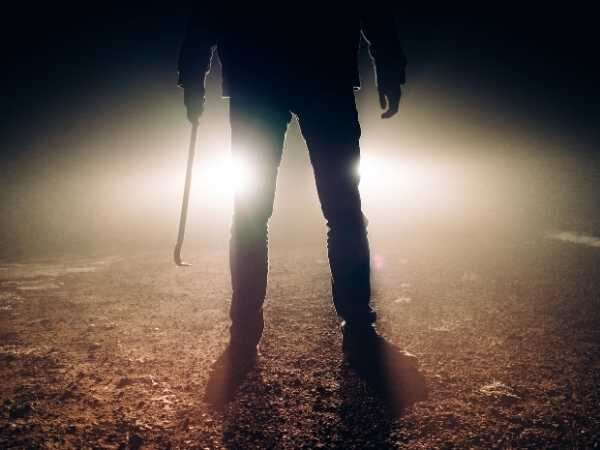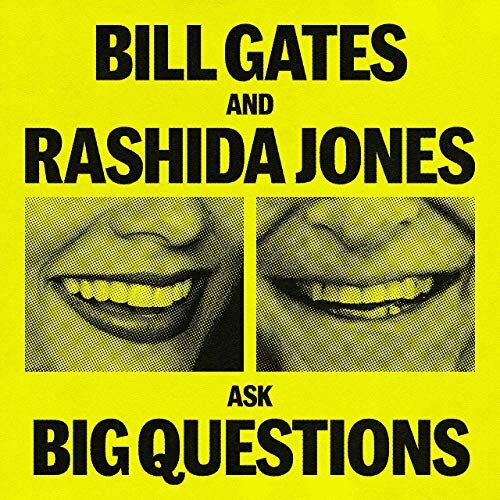5 Best Episodes Of You’re Wrong About
Not Your Mom’s History Podcast
I, like many people during quarantine, have found myself with extra time on my hands.
I have also been spending a lot of time in lines, socially distanced of course, and have found podcasts to be the best way to pass the time.
I recently discovered You’re Wrong About and I – Am – Obsessed.
The premise is simple: two writers research a topic every two weeks, bringing hindsight, fresh insight, and a new spotlight to how the perception of the event was then, versus now.
Michael Hobbes is a journalist for the Huffington Post, and Sarah Marshall is a writer whose work has appeared in Buzzfeed and The New Republic.
Part of their appeal is their chemistry.
Both like and respect each other; both are fierce feminists; both have a dry sense of humor. Their voices are also straight out of NPR: soothing and informative, but with just enough character to keep them from being bland.
They alternate every week, giving each other two weeks to select an event they want to give a second look at.
The topics are eclectic, ranging from political scandals to urban legends.
The fun comes from the listening co-host’s ignorance.
They are the audience proxy, attempting to pull fleeting pieces of information from their memory as a sacrifice to the expert’s sharply honed facts.
It is fun to see what has been misremembered or misconstrued over time.
Furthermore, they relitigate social constructs that have changed over time, often viewing events through a feminist or queer lens.
A large majority of events from the series of episodes boil down to long-held views of sexism, racism, and classism.
Since May 2018 there have been over 116 episodes released. You can find them on Apple right here and then also on Spotify right here.
While it has increased in popularity since the pandemic, each episode is still ad-free.
I have compiled for you a primer on the best episodes to whet your appetite and discover what you might be wrong about, in no particular order.
Here are the 5 Best Episodes of You’re Wrong About:
5. Jeffrey Dahmer
Murder is a hot seller in pop culture, so it is no surprise this podcast would explore it.
However, this episode on Jeffrey Dahmer examines the subject in such a way that brings clarity where no other content has before.
Michael Hobbes starts by explaining who Dahmer was, for the benefit of viewers who were too young, or did not know all the details.
They then detail his upbringing and early life, bringing nuance and understanding as to his murderous persona.
They highlight the struggle with his sexuality and loneliness, laying the foundation for how it is tied to his future actions.
Once they get to his murder spree, they contextualize it with the ineptitude of the Milwaukee Police Department, drawing disturbing reflections of present-day issues.
It also becomes clear that he was not a criminal mastermind.
He simply lived in a predominantly black and poor neighborhood, allowing his actions to continue unchallenged.

By the end of the podcast, you will be lamenting how much sooner he could have been stopped, if not for the deeply embedded racism and classism among the police.
On top of that, the homophobia and fear of AIDS played a role in further investigation into Dahmer’s actions.
Police would refuse to enter his home in fear of infection, or the revulsion of his sexuality.
Weirdly, they also elicit some sympathy for Dahmer, a lonely figure who fell between the cracks of society and let his worst tendencies take over.
Portrayed as a cannibal, you find out he merely kept the body parts of his victims to keep him company. Twisted and disgusting, but tragic on its own.
4. Anna Nicole Smith
There were three times in Anna Nicole Smith’s life where she captured the nation’s attention:
- When she married an 89-year-old billionaire
- When she was a model for Guess jeans
- And when she was a hot mess on her titular reality TV show
In a deep-dive by Sarah Marshall, she takes the listener on a refresh of her life that shows the complexity that was missing from her tabloid legacy.
This episode is a fascinating deconstruction of the gold-digger myth, bringing evidence to the table that upends her status as such.
Yes, she married a man 63 years her elder, but she was being pursued by him, even turning down multiple proposals.
He was the one who found her at a strip club and started lavishing presents on her.
Even though she had a new source of funds, she continued to work, determined to build her wealth and maintain independence.
Once he passes away after their marriage, her life gets upended by an unending cycle of lawsuits by the family to retain control of the family wealth.
It is more of a story of infighting amongst greedy family members than an interloping outsider. She just wanted enough money to stay comfortable, while the rest of the family sought to destroy her.
The added stress and residual mental health issues became too much for her as she turned to drugs to dull the pain.
At her lowest but still attempting to make a living, she turns to reality TV.
Taken advantage of by greedy producers who saw a cash cow and not a human, she is a slurring, drooping, mess.
Depressed and addicted to pills, her life ends in tragedy so far beyond the scope of imagination of a young girl born in a trailer park.
Throughout her whole story, Sarah Marshall breaks down the sexism and misogynistic tropes that led her to be reviled, examining the slut-shaming and sex-negative lens that was applied to her.
Smith was an ambitious woman trying to make a living, and they expertly examine how the media coverage did not let her do that without reproach.
She should have been the picture of the American Dream. Instead, she was a laughing stock.
3. Enron
Do you remember the stock market crash at the turn of the millennium, brought on by the collapse of Enron?
Do you know anything about business?
Neither does Michael Hobbes, which is great because he can translate the complex business jargon into layman terms.
Taking a break from their standard pop-culture fare, Sarah and Michael turn their lens to the business world, researching how a darling of the business world turned the economy upside down.
What you think is going to be a boring subject turns out to be one of their most engaging and informative.

They tackle this subject from a human perspective, investigating the people that led to the fall of a titan.
They lay out how simple unregulated activity led to a scandal that would introduce legislation that would forever impact business in America.
They show how people followed illegal activity because it was human nature to do so.
They explain how it was all brought down by someone who found a discrepancy by accident.
Much like the acclaimed HBO show Chernobyl, this episode on Enron shows how the greatest disasters can be driven by bureaucracy, greed, and an unwillingness to challenge authority.
It also touches on a critique of the American legal system, which they further explore in other episodes.
4. Anastasia
One of the only episodes to resides squarely in the intersection of history, politics, and animated children’s movies.
One of the more lighthearted episodes, at least in the beginning, as they bring on a co-host to discuss the myth of the Russian princess Anastasia.
Like many people growing up in the ’90s, the only exposure Michael and Sarah had to Princess Anastasia was through a movie they mistakenly thought was a Disney movie.
After starting off discussing their misconceptions of Rasputin and talking bats, guest host Dana Schwartz takes them on a historical journey through the changing political landscape of Russia.
During the Bolshevik uprising, the Romanov family was a political figurehead that represented everything the revolution was against.
With competing factions vying to establish dominance, the family became a pawn that each side wanted to control.
The Bolsheviks got to them first, holding them prisoner and moving them to secret locations around Russia.
With loyalists closing in, rather than hand over a valuable pawn, a quick and shoddy execution was enacted.
It was messy, with bullets missing members of the family, and bayonets employed to finish the job.
Due to the rushed nature and impending arrival of the enemy, the bodies were haphazardly buried in the mud.
Afraid to concede power at the negotiating table, the Bolsheviks did not admit the family had been executed, going so far as to say the young girls of the family, Anastasia included, were on a train to Europe.
This started the initial legend that some members of the royal family escaped.
Years later, when it was found out the family had indeed been executed, the hunt for the bodies began.
Because of the haphazard nature of the burials, two bodies were not found.
This continued to feed the myth that Anastasia had somehow escaped, and was living in secret exile.
It was not until the 1990’s that the final two bodies were found, confirming the execution of the entire family.
So if you are looking for geopolitical scandal mixed with executions, and growing urban legends wrapped up in a shiny re-imagining via an animated movie, this episode is right up your alley.
1. The O.J. Simpson Trial
Ok, I am cheating a little bit on this one because it is not just one episode, but a series of 13 (and counting), covering every detail and figure involved in the case.
It is worthy of attention because the O.J. Simpson saga is one of the defining cultural moments of the late 20th century.
Even if you watched all the news coverage, tuned in to all the court proceedings, and have seen the innumerable recreations on television, nothing approaches the depth of research that Sarah and Michael unearth in this series.
By picking through every detail and every person, they bring new clarity and insight into an event that has been exhaustively covered.
They start with Nicole Brown Simpson, bringing nuance to a central figure who has often been overshadowed.
By showcasing the toxic relationship and repeated abuse at the center of the trial, it turns the murder into less of a surprise than the inevitable conclusion.
They even unearth the fact that future star defense witness Mark Furman was an officer who had responded to a domestic disturbance years before the murder!

They continue with Paula Barbieri, Kato Kaelin, and Marcia Clark, establishing personality traits that were condensed into caricatures for the news.
All of the people in O.J.’s orbit get new life breathed into them, and show them for the fallible humans they were in reality.
They help the listener understand each person’s motive, history, and character flaws that led them to get caught up in the trial of the century.
They turn their lens onto events as well, dissecting the white Bronco chase while also weaving in and out of the trail itself.
It is the crown jewel of the show and a must-listen for anyone who lived through the trial or has any interest in understanding it beyond the tabloids.
By the end of it, you are left with such a deep understanding of the relationship of power and fame, the proximity to whiteness and power, the inequalities of the justice system, and more deep revelations about American society.
Like many of the episodes in this podcast, you are left lamenting what could have been, yet more keenly aware of the underpinnings of who and what dictates how events are remembered.
History Upended
So, if you have a willingness to admit you are wrong, and a curiosity about past events, carve out some time to listen to this fantastic podcast.
Let Michael and Sarah charm you with their expertise as you learn what you’re wrong about.
You can find them on Apple right here and then also on Spotify right here.


